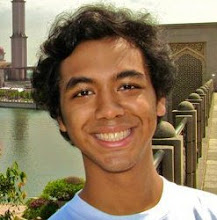In my little world, I’m the happiest person ever. I managed to survive C&G with all body parts intact and a relatively sane mind. Or at least I think I’m still sane. My mom doubts it. … Anyway, I’m on holiday and I’ve been wasting time like it’s junior high school all over again. Then I remembered this blog and decided to fill you in on what I’ve been doing all these time.
Part #1: Lectures
The C&G module is my first ever proper med school module so most the lectures covered basic biology stuffs like the living cell and all the tiny whatchamacallits inside it. And also the minute thingamajigs inside those whatchamacallits. That alone would explain why there’s no such thing as a User’s Manual for The Human Body: because it would simply be ridiculously thick.
Taking things further, I also learned about cellular injury, i.e. what happens in the cell if it’s damaged, both reversibly and irreversibly. Quick note: this series of lectures is the bane of this module. Apparently, when our cells are damaged, they swell due to many mechanisms the explanation of which would make a baby cry. Then, if the injury’s not resolved, the cell will undergo necrosis or cell death. Even dying is categorized into several types: coagulative, liquefactive, and caseous. Woohoo. Another form of cell death is apoptosis, which is basically a swanky way to describe cell suicide.
By the way, the translation of caseous necrosis intrigued me every time I hear it. “Caseous” is related to cheese or keju in Bahasa Indonesia. Hence, students expected the translation to be “nekrosis perkejuan”, casually translated back as “cheesy necrosis”, no pun intended. However, it turned out to be “nekrosis perkijuan”, which sounded totally alien. I don’t know who came up with this “perkijuan”. Go figure.
Errm…what else? Ah, a close competitor for this module’s worst nightmare is Signal Transduction, which covers how signals like hormones or neurotransmitters are received and processed by the cell to elicit response. I find the processes of transduction like phosphorylation cascade quite interesting, although the magnitude of materials is really a turn off.
Let’s not forget the Genetics part of the module. Mendel is still our favorite man and we pretty much went back to the basics again. Monohybrids, dihybrids, and whatnots. Hardy-Weinberg was there too. Perhaps the most jawdropping part of Genetics is when we discovered a whole new catalogue of genetic diseases. Believe me, there were oooh’s and aaah’s in the lecture room.
I think that described most, if not all, of my lectures. TTFN and look forward to the next part. I think I’ll be doing the lab experiments. Booyah!
